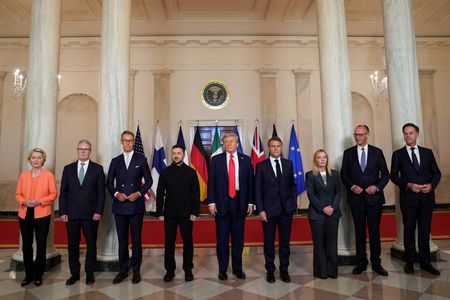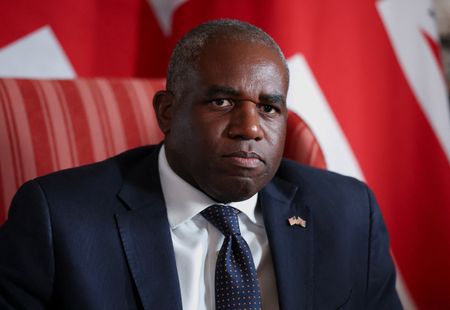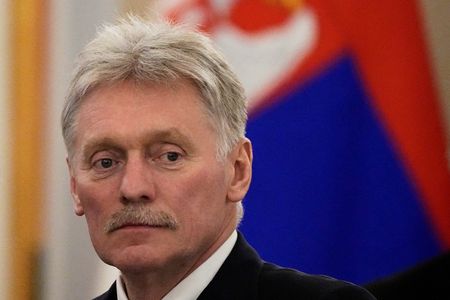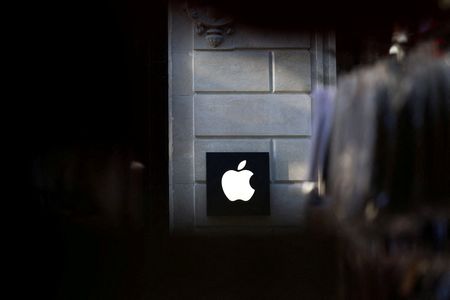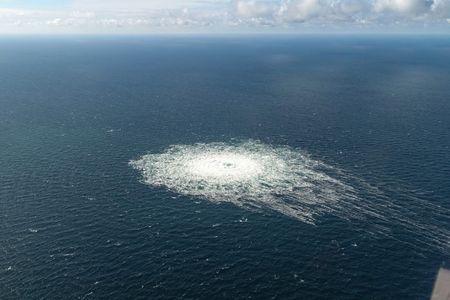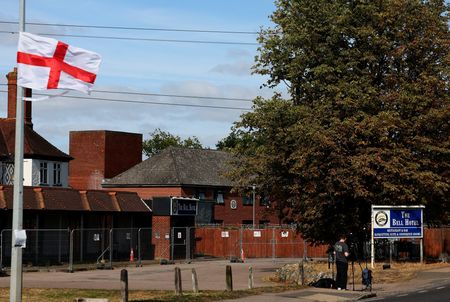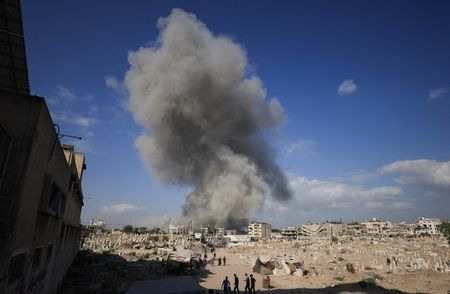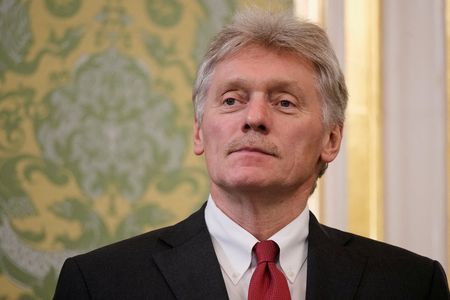By Gram Slattery, Jonathan Landay and Andreas Rinke
WASHINGTON (Reuters) -Shortly after meeting Vladimir Putin in Moscow on August 6, U.S. special envoy Steve Witkoff delivered major news to Donald Trump: The Russian president was prepared to offer significant territorial concessions to end his war in Ukraine.
Following Witkoff’s readout to the U.S. president, described by two people briefed on the matter, Trump hailed his emissary’s “great progress” and agreed to hold a historic summit with Putin, indicating that a land swap was on the table.
But the diplomatic drive soon descended into confusion.
On an August 7 call with several European leaders, Witkoff indicated that Putin was willing to withdraw from the Ukrainian regions of Zaporizhzhia and Kherson in return for Kyiv ceding Donetsk and Luhansk, according to a source familiar with the exchange.
The proposal startled many of those on the call, since it departed sharply from their own assessments of Putin’s position, said four people with knowledge of the discussions, including U.S and European officials who requested anonymity to discuss sensitive matters.
Witkoff appeared to change his account the next day. In a call convened by U.S. Secretary of State Marco Rubio with European national security advisers, the envoy said Putin was not in fact offering to withdraw from the two territories in question, according to one of the sources.
Instead, U.S. officials indicated on the call Putin had signaled lesser concessions to Washington, including that he would not demand the West formally recognize Zaporizhzhia and Kherson as Russian, said a separate U.S. official.
Reuters couldn’t independently determine what was said in the Moscow meeting.
Witkoff, a real estate magnate with no background in diplomacy, broke with standard protocol by going to the meeting without a State Department notetaker and thus left without a record of Putin’s precise proposals, said one source with knowledge of internal administration dynamics.
Interviews with more than a dozen U.S. and European officials flesh out the Trump administration’s latest push to end the war in Ukraine, which culminated in the anti-climactic Trump-Putin summit in Alaska on August 15 that saw the leaders exchange warm words but no peace agreement.
The picture that emerges from the interviews is of an American president willing to move quickly on some foreign policy decisions, relying more on confidants and instinct than the traditional diplomatic channels and deliberative process typical of most prior administrations.
Trump’s supporters say his approach has yielded breakthroughs unimaginable under his predecessor, variously citing the opening of U.S. relations with the new Syrian government, the bombing of Iran’s nuclear facilities and the establishment of a direct line to Putin that could end a war that has killed hundreds of thousands of people.
Yet his seat-of-the-pants style has also created confusion within the administration and among allies, critics argue.
And despite the summit, the Ukrainian war is no closer to a conclusion, said Kurt Volker, a former U.S. ambassador to NATO who served as U.S. special representative for Ukraine in Trump’s first term.
“We are just exactly where we were before Trump took office,” Volker added. “Russia has not changed its position one iota. The war is raging on… We don’t have a clear strategy of how to get Putin to stop the war.”
The White House, which did not address specific episodes described in this story, defended Trump’s broad foreign policy and compared his record favorably to his predecessor.
“Joe Biden’s weak administration didn’t understand foreign policy and his ‘traditional process’ allowed Russia to invade Ukraine,” said Anna Kelly, a White House spokeswoman.
“In contrast, world leaders have affirmed that President Trump made more progress towards peace in two weeks than Joe Biden did in three-and-a-half years.”
Some U.S. officials, including Ukraine envoy Keith Kellogg, were frustrated that Witkoff had introduced conflicting new information into the discussion at a time when the U.S. was finally adopting a firmer line on Russia, said a U.S. official and the source familiar with administration dynamics.
Before the Moscow meeting, the Trump administration had indicated the president would hit Russia with new sanctions or tariffs on August 8 if Putin did not agree to end his war in Ukraine, a deadline that came and went.
The State Department, which handles public affairs for Rubio, Witkoff and Kellogg, said those three officials were in “lockstep” in implementing Trump’s America First foreign policy.
“Any claim otherwise is untrue and unproductive,” said Tommy Pigott, the department’s principal deputy spokesperson.
A separate spokesman for Kellogg reiterated that position, saying he and Witkoff have a close working relationship and were in regular contact.
The Ukrainian and Russian embassies in Washington did not respond to requests for comment.
TRANSATLANTIC CONFUSION REIGNS
Trump’s reliance on trusted advisers like Witkoff has been accompanied by an aggressive purge of the U.S. national security establishment and the firing or reassignment of Russia and Ukraine experts at the Pentagon, State Department and National Security Council.
Witkoff, a close of friend of Trump’s, has won praise for his work ethic. But some U.S. and European officials worry that the Russians are taking advantage of his lack of experience at the negotiating table, Reuters has previously reported.
In the hours following Witkoff’s August 6 Moscow meeting, both he and Trump indicated they believed a breakthrough occurred. The next day, Trump said he could soon meet with the Russian leader, while later saying that a swapping of territories would be needed to end the war.
This alarmed European officials, who fear that a more lenient U.S. policy toward Putin under Trump could force the Ukrainians to make painful concessions to end the conflict that began with Russia’s seizure of Crimea in 2014 and intensified with its full-scale invasion in 2022.
The Europeans spent the following days trying to determine from their American counterparts precisely what Putin said to Witkoff, according to several U.S. and European officials.
Some senior U.S. officials, including Kellogg and Rubio, were also initially in the dark about some details of the Witkoff meeting, according to a U.S. official and the source familiar with administration dynamics, who did not provide additional details.
Even as some European officials publicly praised Trump for his diplomatic efforts, many were privately concerned.
Ukrainian officials told senior German officials on August 13 that their intelligence indicated Putin planned to use the summit with Trump to play for time ahead of a potential Russian offensive in October or November, according to a German source with knowledge of the warning.
The German government declined to provide additional details.
‘TRUMP WILL BE LEFT WITH NO CHOICE’
Trump’s August 15 summit with Putin in Anchorage yielded no obvious advances. He had already lowered expectations in the days leading up to the meeting, portraying it as one step in a diplomatic process rather than an opportunity to strike a deal.
The U.S. president didn’t make any territorial concessions on Ukraine’s behalf, though came out of the meeting saying a temporary ceasefire was not a precondition for a lasting peace – a position held by Putin but not by most European leaders.
European allies immediately began strategizing how to influence Trump’s next move.
Ukrainian President Volodymyr Zelenskiy, who was due to meet Trump in Washington on August 18, asked European leaders over the weekend to join him, according to a German government spokesperson.
The leaders debated whether to go with Zelenskiy in an effort to avert a fiasco like the Oval Office showdown in February, where Trump and Vice President JD Vance berated the Ukrainian leader, according to two European sources.
Ultimately, the August 18 meeting was a success, signaling renewed U.S.-European cooperation, several European diplomats told Reuters. Just last year, on the campaign trail, Trump had encouraged Russia to attack NATO allies that did not pay their fair share on defense.
The most material agreement: Trump and European leaders agreed to formally draft the contours of future security guarantees for Ukraine. In recent days, foreign ministers and military officials have held calls to determine the role each country would play in that effort.
Still, an end to the war seems distant.
Russian officials including Foreign Minister Sergei Lavrov have made clear they will not accept any Ukrainian security guarantees which see foreign troops in Ukraine. While Trump had called for a meeting between Putin and Zelenskiy, Moscow has said such a summit is unlikely in the short-term.
Volker, the former Trump envoy, expressed optimism that Trump will ultimately put heavy pressure on Putin to change his stance via tougher economic sanctions and military support for Ukraine.
“I think that Trump is the embodiment of that Churchill quote where ‘You can always count on the Americans to do the right thing after they’ve exhausted all the other possible alternatives,'” said Volker.
“Trump is really going to be left no choice.”
(Reporting by Gram Slattery and Jonathan Landay in Washington and Andreas Rinke in Berlin; Additional reporting by Lili Bayer in Brussels, Kate Holton in London and Idrees Ali in Washington; Editing by Don Durfee and Pravin Char)

